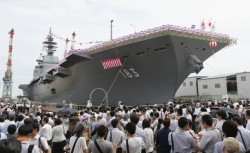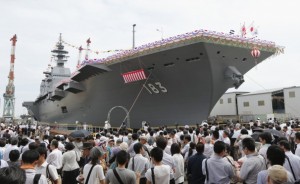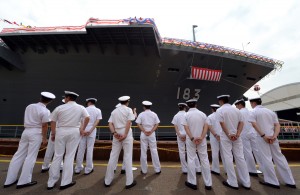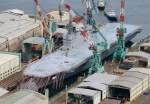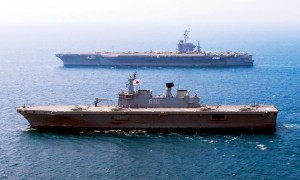(Note: This article appeared at RealClearDefense and is cross-posted by permission.)
In previous writing about the ongoing East Asian naval race shortly after the launching of the Japanese helicopter destroyer Izumo (DDH-183), I noted that the feverish naval race may be rooted in historical grievances, fierce competition for scarce resources, and the recent sequestration cuts within the Department of Defense, which may make it more difficult for theUnited States to “manage its alliances and strategic partnerships in the region.”

As some of my readers have pointed out, I may have appeared somewhat biased against Japan because I did not fully account for other dynamics of the regional naval competition. However, it is not my intention in any way to accuse Japan or its neighbors of espousing expansionist tendencies. I should, therefore, point out that the factors behind the ongoing naval race may be more complex than they appear at first.
That said, the launching of Japan’s newest ship has provoked controversy over what kind of ship the Izumo really is. Whether the Izumo is a STOBAR (Short-Take-Off But Arrested Recovery), VSTOL (Vertical Short Take-Off and Landing), or CATOBAR (Catapult-Assisted Take-Off But Arrested Recovery) type “aircraft carrier” hardly matters. The reason why some of Japan’s neighbors are upset about the Izumo is the fear that Japan may eventually field an F-35B squadron on the ship. In short, it is not Japan’s current capabilities that are provoking uneasiness, but its future naval might.
Indeed, Beijing and Seoul have accused Abe of attempting to repeal the war-renunciation clause within the existing constitution in favor of the “establishment of an army, navy and air force in name.” But both China and South Korea (the Republic of Korea or ROK) share blame for upping the ante for the ongoing naval race.
As Robert Farley, an assistant professor of the Patterson School, noted a few days ago, the Izumo was “hardly the only naval aviation news to emerge over the past week [since]photographic evidence seems to indicate that China is well on its way to a second, indigenous carrier, this one sporting full catapults.”
Not to be left out, the ROK Navy has become a great regional naval power in itself. Like the Japanese Maritime Self-Defense Force, the ROKN also fields an amphibious assault ship, the Dokdo, with a 653 feet-long (199 meters) flight deck. It should be noted that the ship, whichcan supposedly deploy a Marine infantry battalion for any contingencies as they arise, is named after disputed islands claimed by both the ROK and Japan. Moreover, the ROKN hassteadily increased its submarine fleet in response to the growing asymmetric threats emanating from North Korea and Japan’s alleged expansionist tendencies.

While it may be easy to suppose the three East Asian naval powers may be harboring expansionist tendencies, it may also be the case that each is looking to defend its own interests. Indeed, if we trace the origins of this naval race, we can discern that defense budget increases—or for that matter, acquisition of improved capabilities—by the three East Asian countries were reactions to perceived threats posed by their rivals’ attempts to rearm themselves. Thus, the three states can and should adopt “trust building” diplomatic measures to avert a disastrous regional war.
But the bases for mutual trust remain flimsy at best. Contrary to Trefor Moss’s assertion that neither Japan nor China will go to war because of economic interdependence, economic interdependence does not necessarily translate to trust and cooperation. Furthermore, as Taylor Washburn argues, “major powers have often clashed without escalation.”
Considering the obvious distrust that pervades among the three East Asian naval powers, it is not difficult to understand why I have previously argued that taming the East Asian naval race may require America’s continued diplomatic presence as a disinterested mediator. The United States can no longer afford to appear inflexible in the face of fluid geostrategic dynamics and unrelenting sequestration cuts. Nor can it afford to alienate China by implementing “pivot to Asia” strategy. Not only that, but “leading from behind” to tame the ongoing East Asian naval race just may be the most cost effective way in which to exercise influence in the region.
But most importantly, through this newfound role as peacemaker, the United States can set an example as a peace-loving democratic nation committed to promoting good will within East Asia and to the rest of the world.

